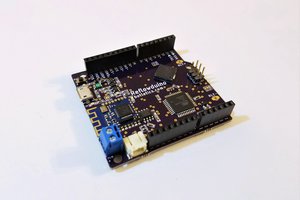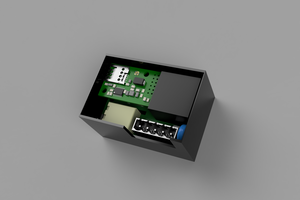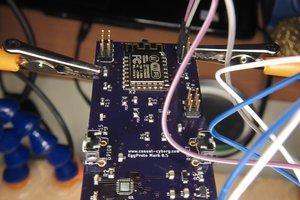To start with, this project would require an enclosure to hold the main control board, backplane, and all associated daughter boards/modules. This could be done like the PXI chassis or it could be set up where every module is in it's own case (for instance a Hammond extruded aluminium case) and is then slid into a rack or shelf system for neat storage.
The interface to each module is extremely simple, having power and SPI connections. A six-pin connector with pins for +12V, GND, SCLK, MOSI, MISO, and slave select pins could handle all communications between the daughter boards and the control board.
The control board would have connections to the backplane of +12V, GND, MOSI, MISO, and eight slave select pins (one going to each of the potential daughter boards). These slave select pins could be driven directly from microcontroller pins on the control board or through a combo of 3-to-8 multiplexer followed by an eight channel inverter to limit pins required to three. As SPI can be run at many MHz, there is plenty of bandwidth available on the backplane to get commands and data back a forth between the control board and the modules.
The control board would interface to a computer via USB. A program running on the host computer would be where the user interacts with the test bench and where data is displayed.
Board form factor would be 10x10 cm. These boards are big enough to pack in a lot of circuitry yet compact enough to fit in reasonably priced enclosures. Also, they can be had cheaply from many manufactures. For example, Elecrow produces 10x10 cm 2-layer boards for about $25 (which gets you ten copies) or 4-layer boards of the same size for about $45 (also for ten copies).
Here are some examples for daughter boards that I have thought of:
- General purpose signal/instrumentation amplifiers
- RF Frequency synthesizers
- Signal/waveform generators
- Small power supply
- RF Switch
- Network Analyzers
- Spectrum Analyzer
- General purpose ADC
- GPS disciplined oscillator
- Distribution amplifier
One great thing about this project is that anyone can contribute a module. If a library of modules could be designed and published, then getting a suite of test gear is obtainable by many more people, not just professionals. It also serves as quite a fun project!




 Timothy Woo
Timothy Woo
 hebel23
hebel23
 Nicolò
Nicolò
 Casual Cyborg
Casual Cyborg
Seems to me that you could just assign SPI signals to the unassigned pins in a Tektronix TM5xx rack, and be done with it. The chassis are all over the used market, and plugins like power supplies and multimeters are cheap and already exist. You could add your own plugins and run alongside them with no need to reinvent certain wheels.